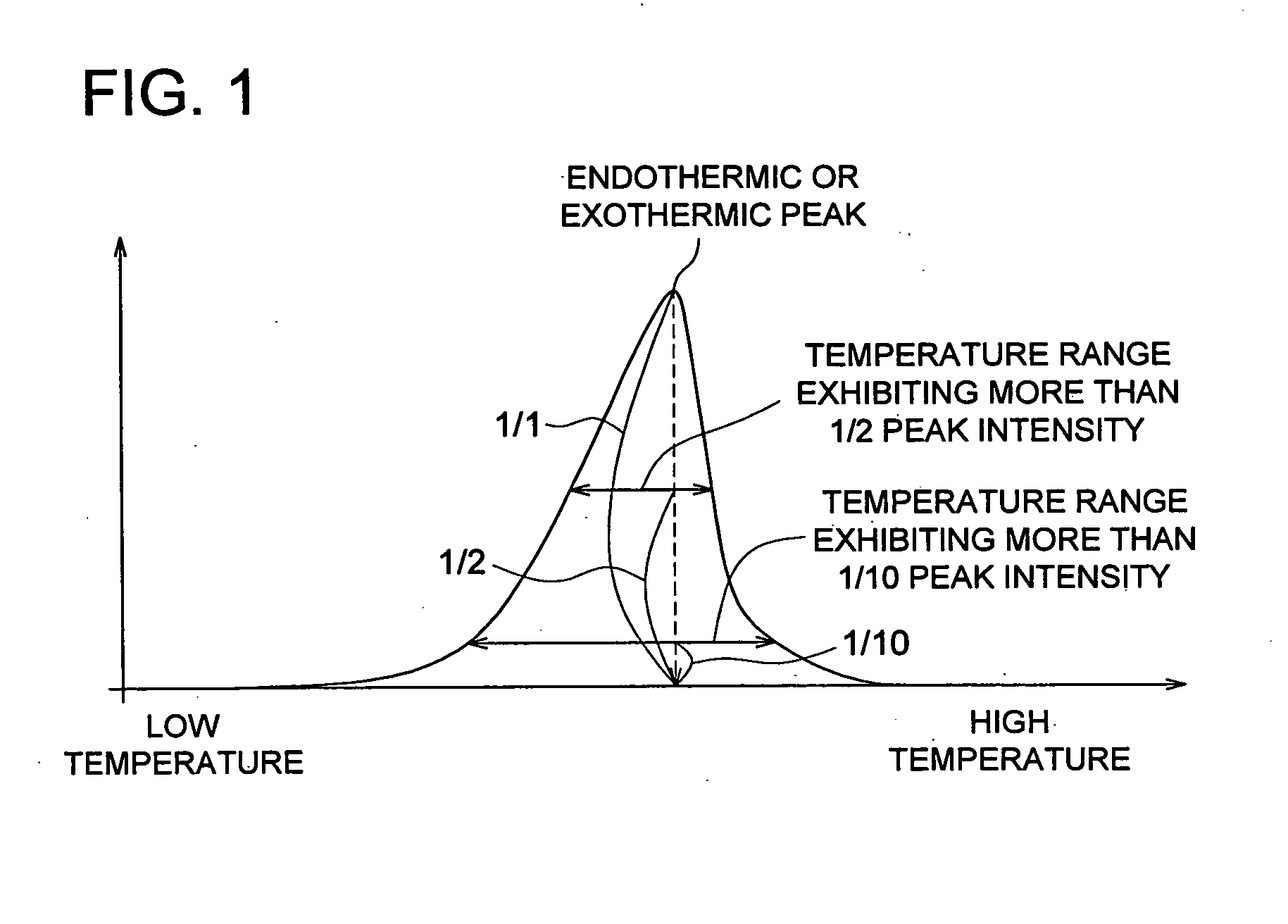Electrophotographic toner
a toner and electrostatic charge technology, applied in the field of electrostatic chargeable toners, can solve the problems of affecting the use of the toner, etc., and achieves excellent releasability and electrostatic chargeability.
- Summary
- Abstract
- Description
- Claims
- Application Information
AI Technical Summary
Benefits of technology
Problems solved by technology
Method used
Image
Examples
example 1
[Preparation of Cyan Toner 1]
[0132] A mixed solution of 200.0 g (converted solid content) of Latex Particle (1) and 5 g (converted solid content) of Pigment Particle Dispersion (1), and 900 g of ion-exchanged water were charged in a reaction vessel (a four-necked flask) equipped with a thermometer, a condenser, a nitrogen introducing device and a stirrer, and the mixture was stirred. After the temperature of the inside of the vessel was adjusted to 30° C., this solution was added with a 2M sodium hydroxide aqueous solution to adjust the pH to 8-10.0.
[0133] Subsequently, the resulting solution was added with an aqueous solution, in which 65.0 g of magnesium chloride·6 hydrate was dissolved in 1000 ml of ion-exchanged water, over 10 minutes while stirring at 30° C. After standing for 3 minutes, the system was heated to 92° C. to perform-formation of associated particles. In that state, the particle diameter of associated particles was measured by use of Coulter Counter: TA-II produc...
example 2
[Preparation of Cyan Toner 2]
[0135] The above-described latex (1H) of 240 parts, 13.6 parts of Wax Dispersion (1), 24 parts of Colored Particle Dispersion (1), 5 parts of an anionic surfactant (Neogen SC, manufactured by Daiichi Yakuhin Kogyo Co., Ltd.) and 240 parts of ion-exchanged water were charged in a reaction vessel equipped with a stirrer, a condenser and a thermometer, and the mixture was added with a 2M sodium hydroxide aqueous solution while being stirred to adjust the pH to 10.0. Subsequently, after adding 40 parts of a 50 weight % magnesium chloride aqueous solution thereto, the system was heated to 56° C. while being stirred and was kept standing for 1.0 hour. The mean particle diameter of toner in the mixed dispersion was 4.3 μm. Next, after the temperature inside of the system was cooled down to 75° C., 30 parts of latex (1H) being added, and then the system was heated to 94° C., 120 g of a 20 weight % sodium chloride aqueous solution being added, and kept standing ...
example 3
[0137] Magenta Toner 3 was prepared in the same manner as Example 1 except that Pigment Particle Dispersion (2) was used instead of Pigment Particle Dispersion (1).
PUM
| Property | Measurement | Unit |
|---|---|---|
| median diameter | aaaaa | aaaaa |
| melting point | aaaaa | aaaaa |
| melting point | aaaaa | aaaaa |
Abstract
Description
Claims
Application Information
 Login to View More
Login to View More - R&D
- Intellectual Property
- Life Sciences
- Materials
- Tech Scout
- Unparalleled Data Quality
- Higher Quality Content
- 60% Fewer Hallucinations
Browse by: Latest US Patents, China's latest patents, Technical Efficacy Thesaurus, Application Domain, Technology Topic, Popular Technical Reports.
© 2025 PatSnap. All rights reserved.Legal|Privacy policy|Modern Slavery Act Transparency Statement|Sitemap|About US| Contact US: help@patsnap.com

